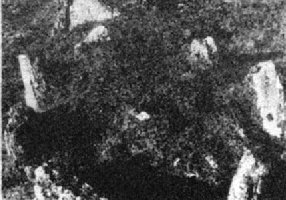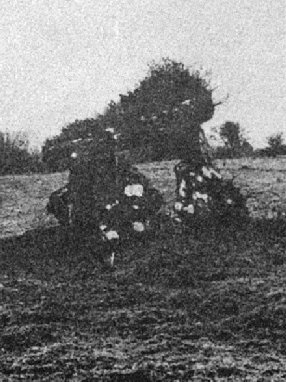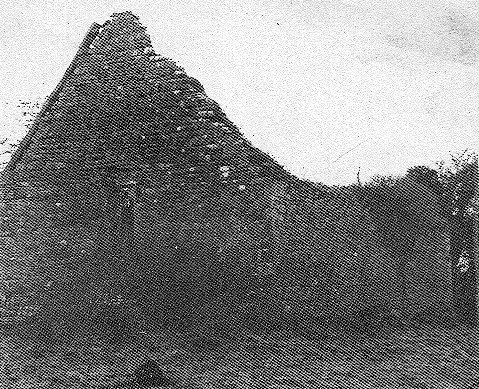by Padraig Leyden
Copyright - 1985Fenagh St. Caillins GAA Website

|
|
by Padraig LeydenCopyright - 1985Fenagh St. Caillins GAA Website |

|
||||||||||||||||||||||||||||||||||||||||||||||||||||||||||||||||||||
| Introduction .................................................................................... | 3 |
| Early Days (Local History) ............................................................ | 5 |
| 1884-1892 ...................................................................................... | 17 |
| Irish National Federation ............................................................. | 29 |
| 1904-1908 ...................................................................................... | 33 |
| 1908-1912 ...................................................................................... | 43 |
| Sports ............................................................................................. | 49 |
| Castlefore Hall .............................................................................. | 50 |
| Fife and Drum Band ...................................................................... | 52 |
| AOH Band ..................................................................................... | 54 |
| 1913-1922 ...................................................................................... | 57 |
| Political Unrest ............................................................................. | 67 |
| 1923-1932 ...................................................................................... | 70 |
| 1933-1939 ...................................................................................... | 83 |
| Castlefore Experiment .................................................................. | 88 |
| Modern Band ................................................................................ | 91 |
| 1940-1949 ...................................................................................... | 95 |
| 1950-1959 ...................................................................................... | 105 |
| 1960-1969 ...................................................................................... | 116 |
| 1970-1979 ...................................................................................... | 126 |
| Ladies Football .............................................................................. | 141 |
| Sheemore Gaels ............................................................................ | 147 |
| 1980-1984 ...................................................................................... | 149 |
| Park Development ........................................................................ | 157 |
| Handball ....................................................................................... | 159 |
| Statistics ....................................................................................... | 163 |
| Population Statistics ..................................................................... | 169 |
|
This book has been produced to celebrate the opening of a new Football Park and complementary facilities. But more than that, it has been produced to celebrate ninety-seven years of the Club's existence and commitment to an ideal - an ideal of comradeship and sportsmanship. Fenagh may not have been the most successful club in Leitrim in terms of titles won but this should not be the criterion of success - success to me is looking back on nearly a century of endeavour and saying "we played the game", like the Olympic ideal - participation not victory. This book does not set out to list every player that donned a Fenagh jersey - such would be impossible. Undoubtedly, there were players superior to many mentioned in the following pages - to these, my apologies. Credit for any Club success inevitably goes to the players, it is they who are seen to bring honour to the club. This, of course, has its drawbacks as it brings criticism during the many hours of defeat. However, no club could exist without the faceless people who guide it through good and bad times. These, the officers and the many helpers, who down through the years have collected at gates, washed jerseys, lined fields and attended meetings will never see their names in print. This history is a tribute to them, it is they who have made and continue to make this club the unit it is today. The first chapter of this book contains a number of items of local interest, far removed from the G.A.A. This is just the tip of the iceberg of history, in which Fenagh abounds. Hopefully, one day, somebody will record in greater detail what I have merely suggested. The years ahead for many organizations, including the G.A.A., will be difficult. Employment patterns indicate that leisure time is on the increase. Never was there greater need of improved sporting facilities. Today, Fenagh makes its contribution to the future. Ninety-seven years have passed, much of it bringing progress but never such a stride of progress as this day represents. This is only a beginning - let us all remember that. |

| 3 |
CHAPTER 1Early Days | |
|
From earliest times Fenagh featured in history. It is said that the Fomorians, one of the
earliest colonising tribes of Ireland, on their retreat from the battle of Magh Tuireadh,
were caught in the vicinity of Fenagh. Nine of their chieftains were slain and buried in what
is now the townland of the Commons.
The first written historic record of Fenagh appears in the Annals of the Four Masters under the year 464. Here it is recorded that Fenagh was the scene of the death of one Conall Gulban, son of Niall of the Nine Hostages. He was buried at Fenagh and it is thought that the Cromlech in the townland of Fenagh Beg on the property of John Pat McGovern, marks his resting place.  Alleged burial place of Fomorian chieftains in the Commons Saint Caillin
The next item of importance was the arrival of St. Caillin. To write authoritatively on
Caillin would be a dangerous task. It would appear that Caillin was a member of the Conmaicne
tribe who lived principally around Dunmore in County Galway and was born in the first half
of the sixth century. The Conmaicne tribe extended their influence considerably, conquering
most of South Leitrim and County Longford, with Caillin settling around Fenagh. His arrival,
according to legend, caused quite a stir among the local pagan priests or druids but if we
ignore such folklore, it would appear he made peace with the local chieftain Fergna. He
established a religious community, building a monastery, again according to legend, with
some difficulty.
|
 Conal Gulban Fenagh - Under Various NamesThrough its history Fenagh was known by many names - Dun Conaing, Dun Gaire, Dun Baile, Bearna in Braith and Fenagh. Each of these names has its own story and derivation. The word Fenagh or Fiodhnach comes from "fidh" which means woody and was so called because Fenagh was surrounded by woods. There is evidence that even in the 17th century there were considerable woods around Fenagh as is illustrated by the poet Padraig Og Mac an Bhaird in 1688.
D'on tseigh is uasal ard nós
Its woods moreover is a choosen haunt By 1836 these woods had disappeared as the historian O'Donovan comments that "it is treeless, desolately naked and abandoned". |
| 5 |
St. Caillins Bell
In 1224 we again find reference to Fenagh in the Annals when it mentions an
accident at Fenagh. This also mentions for the first time Clogh na Righ or St. Caillin's Bell.
The Book of Fenagh explains both these names - St. Caillin's Bell, because it belonged to the
said gentleman and Clogh na Righ (Bell of the Kings) because it was used in the baptism of many
kings. In keeping with the general tone of the Book of Fenagh, which has as its primary aim the
collection of dues for the Fenagh monastery, it explains, that when chieftains were approached
by bearers of the Bell, they were obliged to pay tributes with resulting blessings - failure to
pay of course brought great misfortune!

The body of the bell is made of bronze, its mouth perfectly circular with
a diameter of 4.37" which is also the height of the bell. The tongue of the bell is
|
 Lough - now in National Museum
made of iron and it seems likely that originally it was a hand bell, although it now has attachments
to enable it to sit on a frame. Experts date the bell around 1100, so it could not possibly
have belonged to St. Caillin - it is unlikely to have baptised many monarchs either!
Coarabs
Many of the other references in the Annals are to the Coarabs of Fenagh. The position of coarab
was a hereditary one, maintained in the same family for countless generations. The coarab was
the lay abbot or warden of the lands belonging to the church or monastery. In early years they
levied extensive dues from princes and gentry who recognised saints or founders of ecclesiastical
places as patrons and who enjoyed the privilege of burial in places such as Fenagh.
The coarabs of Fenagh were the O'Rodachain or O'Rodaighe family, the first of them, Sean, dying in 1377. It was one of this family who caused the parish's most famous manuscript - The Book of Fenagh, to be written. |
| 6 |

| |
The Book of Fenagh
The "Old Book of Caillin" was probably written between 1350 and 1400. It is known
to have consisted of only a few poems, author unknown, although no copies of this manuscript
now exist. Until it was lost it was in the possession of the coarab of Fenagh.
In 1516 the coarab of the time, Tadgh O'Rodaighe commissioned a writer
Muirghis MacPhaidin O'Maolchonaire to transcribe and recast the Old Book of Caillin. This
work of O'Maolchonaire is the Book of Fenagh. Its poems were copied from the Old Book while
prose pieces were added, which were the works of O'Maolchonaire and Brian and William
O'Rodaighe, brothers of Tadgh O'Rodaighe for whom the manuscript was written.
Since O'Maolchonaire wrote entirely in the interest of the monastery
which claimed the saint as its founder, he did not have to confine his scribing to fact -
this could be stretched where it seemed in the best interest of the monastery. O'Maolchonaire
did this liberally with his prose pieces and probably some if not most of the poetry attributed
to St. Caillin himself. Very briefly - the book states the
|
various promises the local chieftains - local here would extend through
most of Donegal - made to Caillin and the blessings he bestowed on them. These promises must
continue to be honoured, and tributes paid, or Caillin would withdraw his divine intercession
and ill luck would befall those tribes.
The book was written completely in Irish and was in the possession of
the O'Rodaighe family at Fenagh until the early nineteenth century when it passed to the
last direct representative of the family, Brian (Bernard) O'Rodaighe who was Parish Priest
of Kilronan until his death about 1840.
Eventually it was sold for ten guineas to the Royal Irish Academy in
Dublin. Three other copies of the original manuscript also exist but none are complete.
It was translated into English and published in 1875 and again in 1939.
|
| 7 |
CHAPTER 21884-1892 | |
Formation of the G.A.A.
The credit for the formation of the G.A.A. goes to Michael Cusack. Born
in humble surroundings in the Burren in County Clare in 1847, he was a national teacher who
had the enterprise to set up his own school called Cusack's Academy.
Quite a good athlete himself, he had tried his hand at nearly all the
athletic events of his time including rowing, cricket, hurling, handball, rugby and football.
Following a period during which he organised athletic meetings,
he called a meeting for Thurles on November 1st, 1884, with the intention of organising
native games. From this meeting emerged the G.A.A. Maurice Davin was elected President,
Michael Cusack, John Wyse Power and John McKay joint secretaries. Later Archbishop Croke,
Charles Stewart Parnell and Michael Davitt became patrons.
The G.A.A. in Leitrim
"The Association swept the country like wildfire", wrote Cusack.
This, for the bulk of the country, was indeed true. However, the wind did not apparently,
blow NorthWest, for nearly five years, with Leitrim being one of the last areas to organise.
The credit for the organisation of the G.A.A. in leitrim, rests primarily with the Mohill
Faugh-a-Ballaghs club.
Following a challenge match between the Mohill F.A.B. club and Eslin
Sarsfields, it was agreed that the secretaries of both clubs would notify the other clubs
in the county, of a meeting to be held in Mohill on Sunday, 14th April, 1889 "to put
Leitrim in line with the rest of the country by forming a County Committee" and to
organise a tournament for Mohill on Easter Sunday - the winners to be declared "Champions
of South Leitrim" with a purse of £3.
Representatives from eleven clubs attended this meeting, including
Fenagh who were represented by Thomas Sheridan (Costra). Indeed it was
Sheridan who helped solve sticky problem at this inaugural meeting. The Leitrim Advertiser
reports:
Mr. Wallace (Carrick) objected to the meeting electing County Council as there were not
fifteen clubs represented and although the majority of the meeting was against him, persevered
in his objection in a manner which irritated nearly all the delegates present, till matters
assumed a brighter colour by the production of a letter from the Secretary of the Central
Council to Mr. Sheridan, Fenagh, in which among other instructions, he pointed on that it was
not necessary in forming a County Council to have all clubs represented on account of the long
journey some of them would be obliged to travel. Objections at once ceased and the election of
officers and committee was proceeded with.
|

Abbey in memory of the lawder family
Officers were then elected with Sheridan being defeated by John Mulligan,
Mohill, in a contest for the post of secretary. He was later included in a committee of eight
and was elected Leitrim's first delegate to Central Council.
The G.A.A. in Fenagh
"Since eleven clubs sent delegates to the meeting in Mohill, it is obvious that clubs existed
before the formation of a County Committee. Fenagh was one such club and was known as "The Sons of
St. Caillins" or just "St. Caillins", after the patron saint of the parish and reputed builder of the abbeys.
"A report in the Roscommon Herald indicates that the club affiliated on 1st October
1888 – presumably to Central Council, since no County Committee existed until seven months after this date.
This affiliation would probably account for Thomas Sheridan having in his possession a letter from the Secretary of Central
Council at the inaugural meeting of the County Committee. It also tells us the club colours – green and yellow and the first
known officer of the club – Secretary Thomas Sheridan.
"From another source we learn more of club colours – Green jerseys and yellow trousers.
These colours reflect the spirit of nationalism at the time and were more in the nature of a national costume, with many clubs
sporting the same colours.
"From these references we can also gather that although a formal club might not have
been in existence before October 1888, at least their affiliation on that date indicates that football was being played in the
locality – probably in the form of games between two groups from the locality, join in as you arrive like club practices
nowadays. Indeed Tom Harkin (Costra) recalled hearing of cross-country football in Costra and Drumharkin in the years
before the formation of the G.A.A.
|
| 17 |